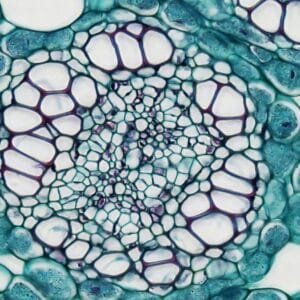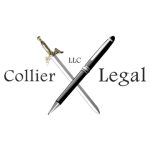Patent Strategies for Biologics and Molecules

Navigation
- Why Patent Strategy Matters in Biologics and Molecules
- The Building Blocks: Key Patent Types to Know
- Differences Between Patenting Small Molecules vs. Biologics
- Roadmap: When and How to File Patents in Biologics / Molecule Projects
- Key Challenges & Mitigations
- Practical Tips & Best Practices
- How This Fits Into Your IP Ecosystem
- Conclusion
In the competitive world of drug development and biotechnology, securing strong patent protection for both biologics and small molecules is essential. A well-designed patent strategy can determine whether your molecule, biologic, or platform sees commercial success—or whether competitors encroach early. In this post, we walk through the key strategic considerations for patenting biologics and molecules, compare the challenges and opportunities in each domain, and offer a roadmap you can pair with deeper technical posts like How to Patent Biologics in Clinical Development to build a robust IP position.
Why Patent Strategy Matters in Biologics & Molecules
- Patents are the backbone of commercial exclusivity in life sciences: they enable you to recoup R&D investments.
- Especially in biotech and pharma, the margin between success and failure is narrow—weak patenting strategy can make or break deals, licensing or investor interest.
- Biologics and molecules differ in their scientific, regulatory, and competitive landscapes—so your patent approach must be tuned to each.
The Building Blocks: Key Patent Types to Know
To build a defensible IP “fortress,” innovators often layer multiple patent types. Here are the core ones:
| Patent Type | What It Covers | Strategic Role / Use | Notes / Risks |
|---|---|---|---|
| Composition of matter (new molecule / biologic itself) | The chemical (for small molecules) or amino acid / nucleic acid sequence (for biologics) | Primary, highest-value protection | Very hard to design-around; but subject to stricter enablement, novelty, and non-obviousness scrutiny |
| Method-of-use / Indication patents | New therapeutic uses, dosing regimens, patient subpopulations | Extend value of existing molecule or biologic | Can often survive even after the composition patent expires |
| Formulation / Delivery patents | Specific formulations (e.g. sustained release, novel excipients) or delivery routes (e.g. inhaled, nanoparticle) | Defend improvements, prolong exclusivity | These often are more vulnerable to generic / biosimilar challenges |
| Process / Manufacturing patents | Unique methods or steps for making the biologic or molecule | Barrier to reverse-engineering and inside-out entry | For biologics especially, manufacturing method patents are critical because process complexity matters |
| Platform / Library / Scaffold patents | Covering classes or scaffolds (e.g. antibody libraries, scaffold proteins) | Broad coverage to catch derivatives | But must be supported by adequate disclosure and breadth constraints |
| Patents on host cells, expression systems, purification, analytics | Supporting “back-end” innovations | Act like strategic fences around the core biologic | Particularly for biologics, these help build a “patent thicket” around competitors |
The goal is not that every patent individually is bulletproof, but that collectively, they raise the cost and risk for a competitor to design around or litigate.
Differences Between Patenting Small Molecules vs. Biologics
Scientific & Structural Complexity
- Small molecules are well-defined, chemically synthesizable, and often lower molecular weight; replication is easier.
- Biologics (antibodies, fusion proteins, cell therapies, mRNA constructs) are large, complex, often heterogenous, and challenging to reverse engineer.
Regulatory Regime & Exclusivity
- In the U.S., biologics enjoy 12 years of regulatory exclusivity under the BPCIA (regardless of patent life) in which biosimilar entrants cannot rely on innovator data.
- In small-molecule space, generics often leverage bioequivalence and the Hatch-Waxman regime, which provides different pathways.
- For biologics, biosimilar entrants must often conduct clinical and switching studies, which slows entry.
Patent Thicket / Evergreening
- Biologic developers often erect a patent thicket—many overlapping patents on formulations, manufacturing steps, analytics, cell lines—to deter biosimilar entry.
- For small molecules, “evergreening” strategies (patents on salts, polymorphs, new formulations) are likewise used but often more subject to scrutiny.
Enablement, Written Description & Section 101 Risks
- Biologic patent claims are often challenged under U.S. § 112 for lack of enablement or written description (i.e. whether your disclosure supports the breadth claimed).
- Recent decisions (e.g. Amgen v. Sanofi) stress that broad claims must be supported by multiple exemplars.
- Section 101 (patent-eligibility) challenges may arise for biologics, especially for natural proteins or gene sequences, requiring careful drafting to emphasize modification or inventive complexity.
Roadmap: When and How to File Patents in Biologics / Molecule Projects
Pre-Discovery / Early R&D Stage
- File provisional patent applications or early disclosures to lock in priority before public disclosure.
- At this stage, you may claim general scaffold classes, libraries, or methods of selection.
During Lead Optimization / Preclinical
- Add claims covering optimized sequences, mutations, conjugations, or linkers.
- Begin morphology of delivery forms, formulation options, or process development.
Upon IND / Early Clinical Stage
- With experimental data in hand (binding affinity, pharmacokinetics), bolster claims with working examples.
- File secondary patents (methods, formulations, manufacturing) before your core patent expires or becomes obvious.
Late-Stage / Before Approval
- Capture new indications, dosing schedules, combination therapies.
- Consider patent term adjustment / extension to recover regulatory delay (especially in biologics).
- Prepare “patent fences” in manufacturing and ancillary tech to block biosimilars.
After Approval
- Monitor competitor filings, oppositions, and biosimilar entry.
- Pursue follow-on innovations and file additional patents (improved versions) as long as new inventive content exists.
- Enforce your portfolio strategically.
Key Challenges & Mitigations
- Breadth vs. Validity tension: Broad claims are valuable, but risk invalidation if not well supported. Mitigate by tying broad claims to specific examples.
- Design-around by competitors: Use overlapping claims (scaffold, process, formulation) so a competitor cannot easily avoid all.
- Disclosure pitfalls: Make sure your specification supports all claim elements, especially for biologics with structural complexity.
- Timing risk: Filing too early may leave you without strong data; filing too late risks public disclosure or prior art.
- Global variation: Patentability rules, patent term adjustments, and regulatory exclusivity differ across jurisdictions—plan your international filings accordingly.
- Patent thicket backlash/regulation: Some policy efforts (or challenges) target excessive thickets or “patent stacking.”
Practical Tips & Best Practices
Iterative internal invention auditing
Regularly review your pipeline for incremental innovations (mutants, delivery tweaks, purification steps) and file early.Claim layering / fallback claims
Draft nested claims from broad to narrow; use fallback positions to preserve enforceability.Strategic disclosure
In your specification, disclose multiple embodiments (e.g. multiple biologic variants, linkers, formulations) to support breadth.Coordinate with regulatory strategy
Time your patent filings to align with clinical milestones, IND filing, and public disclosures.Watch competitor / biosimilar landscapes
Conduct freedom-to-operate and patent landscaping analyses to spot threats early.Leverage patent term extension / adjustment
For biologics, carefully plan to reclaim lost time due to regulatory delays.Don’t ignore trade secrets
Some manufacturing know-how may be easier to keep as trade secrets than to patent—especially where public disclosure gets tricky.
How This Fits Into Your IP Ecosystem
This post serves as a broad, strategic overview of patent strategies for biologics and molecules. Within your content cluster, the reader can then dive into:
- How to Patent Biologics in Clinical Development for more granular tactics (e.g. for antibodies, fusion proteins).
- Biotechnology Intellectual Property: Strategies for Innovators for context on biotech patenting as a whole.
Readers ready to move from strategy into action can also explore our Patent Services or Contact Collier Legal to discuss tailored solutions.
Conclusion & Next Steps
In summary, the journey of a molecule or biologic from lab bench to market is only as defensible as its intellectual property structure. By layering robust, strategically timed patents across composition, use, formulation, process, and supporting technologies—and by coordinating claims with regulatory strategy—innovators can build a “moat” that deters competition and supports long-term value.
If your team is working on a novel biologic, small molecule, or platform technology and wants help building out a tailored patent strategy, schedule a consultation with Collier Legal to map out the next moves.

About
Attorney Collier started his own law firm straight out of law school and has been practicing law in Ohio for 5+ years. During that time, Joe focused on business law and litigation, gaining some exposure to intellectual property law. While running his firm in 2021, Joe decided to go back to school and get his patent license. Since then, Attorney Collier has been focusing on protecting innovators and entrepreneurs through his expertise in intellectual property and business law.
